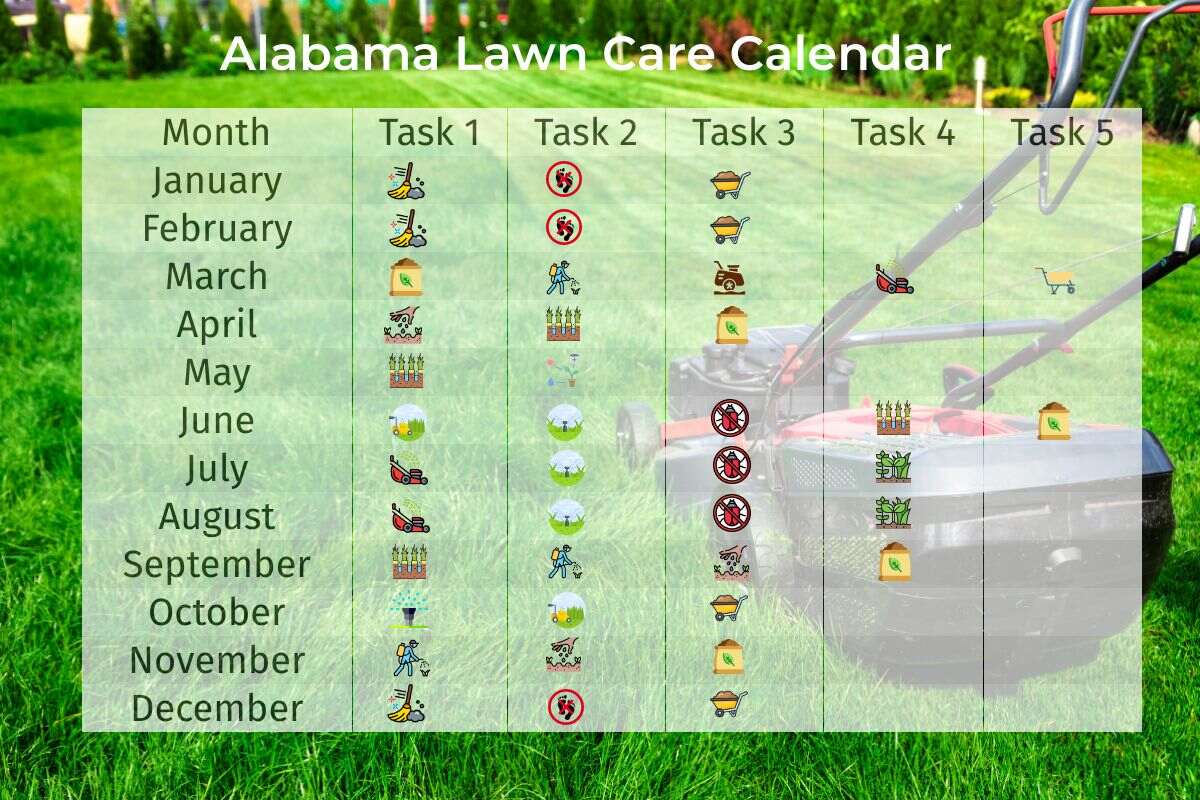
You’d think living in Alabama would mean you have the easiest lawn care around. After all, year-round warm temperatures make it difficult to go wrong in the Heart of Dixie. But every season has its pitfalls when it comes to lawn care. If you don’t know about them, you could pay the price down the road. So, let’s get into what your Alabama lawn care schedule should look like for each season.
Spring Lawn Care in Alabama: March – May
Spring in Alabama arrives around March, and it’s time to fire up the lawn mower and other lawn care equipment! Temperatures around 65°F usually indicate that your grass is transitioning out of its winter dormancy and will start shooting up soon.
Here’s what you can do to make that transition as smooth as possible.
Weed Control – Early March
It’s best practice to apply pre-emergent herbicides early in the season so you can nip any pesky weeds in the bud. That way, you’re not stuck playing catchup and treating actively-growing weeds that could hurt your grass.
Keep an eye out for common Alabama weeds like annual bluegrass or chickweed – those can cause major turf damage. Know that not all herbicides work for all weeds. Read the herbicide label before you apply it to make sure you’re using the right one for your grass and the type of weed in your yard.
For more info on weed control and chemical application, check out the Alabama A&M University Guide to Weed Control.
*Note: It’s crucial to apply pre-emergent herbicides just before your grass comes out of winter dormancy – too soon or too late, and you risk doing more harm than good to your grass.
Dethatching – Mid-March to Mid-April
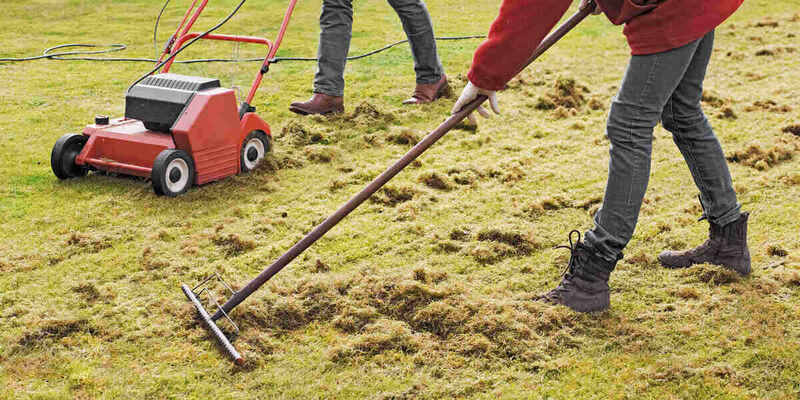
Dethatching, also known as power raking, is simply the process of loosening and removing old grass stems and other debris from the thatch layer in your lawn. When done correctly, it helps create a healthier lawn by improving water and nutrient penetration, aeration of the soil, and allowing the grass to grow better. It should be one of the first steps of your spring lawn care plan.
It’s especially important in areas with clay soils, which already struggle with poor drainage. Homeowners in Alabama should consider dethatching their lawns in mid-spring every year.
Mow Your Lawn – Beginning in Mid-March
To keep it looking its best, it’s vital to mow your grass to the recommended height for your grass variety. As soon as you spot new growth, ready your mower and go for it.
Early to mid-March is usually the perfect time to start – just make sure the last frost is out of the way. And don’t get too eager and cut off too much of your grass at once, as cutting more than a third of the blades’ height can be really damaging.
Here’s a guideline on the right mowing heights for Alabama’s grass types:
| Grass Type | Recommended Mowing Height | Recommended Mowing Frequency |
| Bermudagrass | 1.5 – 2.5 inches | 5 – 7 days |
| Zoysiagrass | 1 – 2 inches | 7 – 10 days |
| Bahiagrass | 3 – 4 inches | 7 – 14 days |
| Centipedegrass | 1 – 2 inches | 10 – 14 days |
| St. Augustinegrass | 3.5 – 4 inches | 7 days |
| Tall Fescue | 2 – 3 inches | 7 days |
| Ryegrass | 1 – 2 inches | 7 days |
Pro Tip: Before performing any mowing, sharpen your mower blades. That’ll ensure you get a neat cut and prevent diseases from creeping up.
Fertilizing – Late March to Mid-April
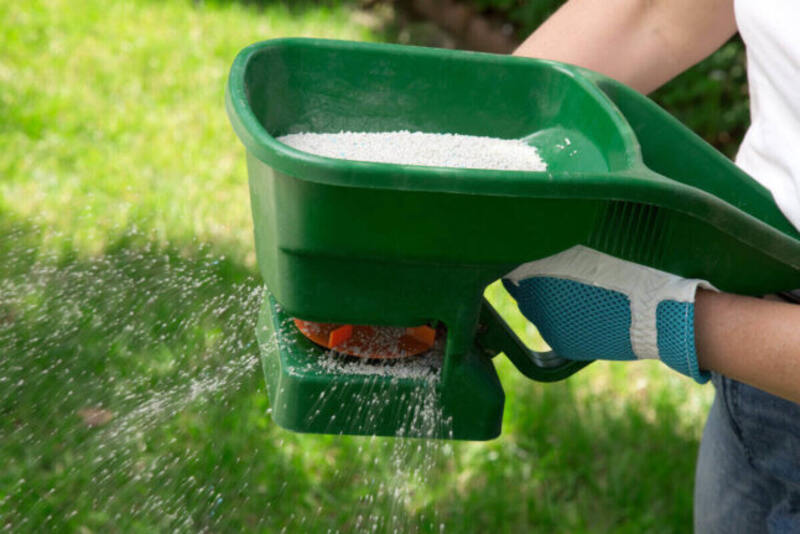
Fertilizer isn’t just an extra add-on for lawn fanatics – it’s an essential part of any healthy lawn care program. You should apply the first fertilizer of the year after the risk of frost has passed and temperatures are above 50°F. For Alabama, that usually means in late March or early April.
If you’re not sure what kind of fertilizer your lawn needs, it’s best to get a soil test, which will tell you exactly what your lawn needs to look its best. After applying your fertilizer, wait at least 24 hours before cutting the grass – mowing and fertilizing on the same day can cause damage.
Cool-season grasses in Alabama should be fertilized around the beginning of March. Tall fescue and other cool-season grasses have a different growth period than warm-season grasses like Zoysia or Bermuda, which are more common in Alabama because of the hot climate. Different growth periods mean different fertilization schedules.
Repairing Bare Spots – April
If you don’t protect your grass during winter, it might end up looking patchy and lifeless in the following season. Don’t worry — that doesn’t mean your grass is a goner! Most of the time, repairing bare spots is just a matter of overseeding those areas.
Spread new grass seeds in April when the soil temperature is rising. Depending on the seed type, you can sow either in the early morning or late evening when temperatures are between 65 and 85°F.
Pro tip: Use a top dressing like compost or sand to cover seeded areas lightly. This will help protect the seedlings from drying out and increase the chances of successful germination. Plus, don’t forget to water your seeded areas frequently (but not too much!) for the next three to four weeks until the seedlings take root. Typically, one to two waterings per day are enough.
Lawn Aeration – May
Aerating the lawn means poking thousands of small holes in the soil to help water, air, and nutrients reach the grass roots.
The best time for aerating your Alabama lawn is in late spring, around May. That’s when warm-season grass reaches its peak growth, making it easy to fill in the holes left over from aeration. If you have one of the rare cool-season lawns in Alabama, you can also aerate at this time, but it’s better to wait until fall.
If you plan on renting an aerator machine, make sure it’s one that removes soil plugs roughly two to three inches deep and an inch in diameter, with around two to three inches in between.
Final Boost of Nutrients – Late May
With temperatures starting to pick up for the hot Alabama summer, it’s time to give your grass a final boost of nutrients. It’s best to apply a slow-release fertilizer in late May or the first few days of June. That way, you can slow down nutrient depletion during the hottest months.
Remember to stick to recommended application rates so you don’t end up with a burnt lawn.
Cool-season grass types, such as tall fescue, should never be fertilized this late in spring. At this time, they are slowing their growth for summer. Fertilizing them when it’s so hot out could damage or even kill the grass.
Summer Lawn Care in Alabama: June – August
The scorching summers in Alabama come with a slew of their own lawn care challenges. Think drought, disease, weeds, pests, and more. Follow this summer lawn care schedule to help your grass stay healthy and green, even when the temperature soars.
Continue Your Mowing Schedule – All Summer
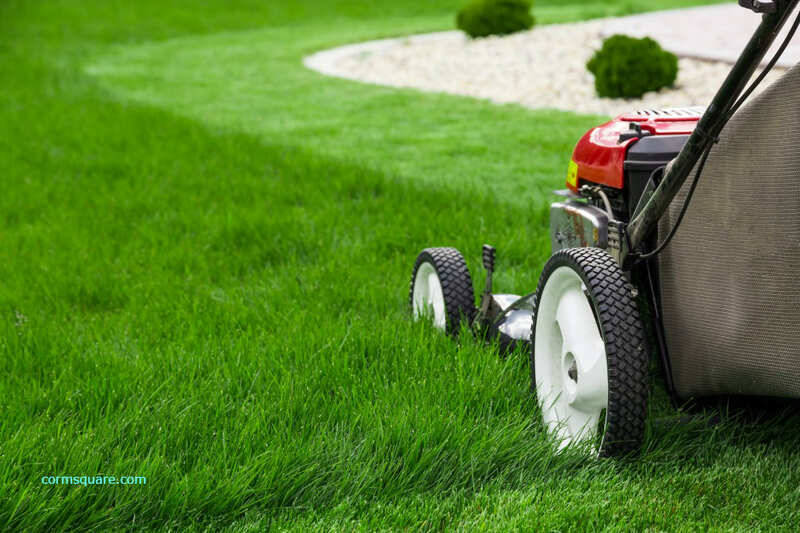
Keep mowing the lawn once or twice a week, just like you started doing in spring. But in summer, cut it a little higher. Taller grass blades provide some much-needed shade to the soil, and grass blades that are cut too short will not be able to store moisture.
Water Management – All Summer
Without proper watering, Alabama lawns can suffer badly in the summer. If temperatures stay high for extended periods of time with no rain, your grass might even go dormant.
To spot areas that need more water, try the “stand test.” After you walk or stand on the lawn, grass blades that remain smooshed for more than 10 seconds need extra H2O. Water at the correct rate (about 1 inch per week, no more and no less) and early in the morning to prevent water loss.
Deter Disease – Evenings
There are two common lawn diseases Alabama natives need to look out for: red thread, which usually shows up in late spring, and brown patch, which rears its ugly head in the heat of summer.
They’re especially common in the South and can damage your turf significantly. While you can use fungicides to kill these lawn diseases, it’s much better to prevent them in the first place. The best way to do that is to keep your lawn free of excessive thatch and not overwater.
Pest Management – Early June
Pests can be another problem for Alabama lawns in summer. Look out for symptoms of lawn grubs, armyworms, and sod webworms. Catching an infestation early will reduce the chances of severe damage down the road. You can control these pests with chemical insecticides or natural methods, such as beneficial nematodes or milky spore.
Aerate – Early June
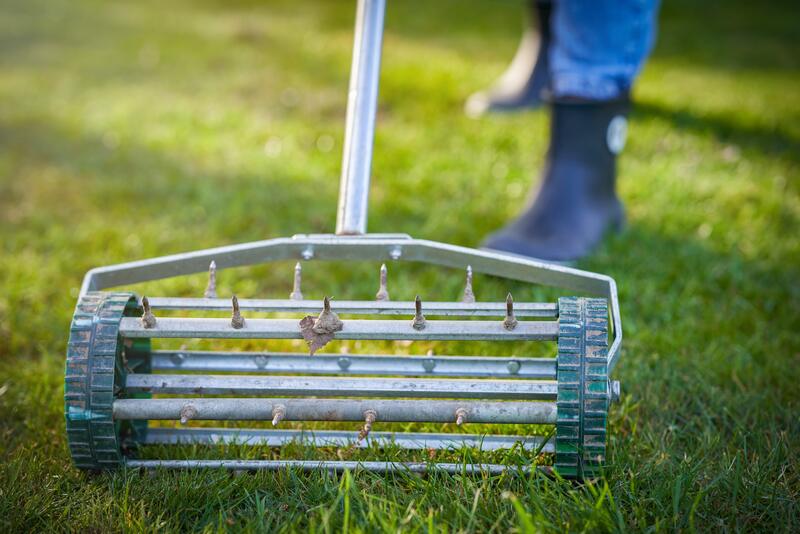
Aerating your lawn in the summer is a great way to promote healthy growth. But this type of treatment requires extra care and precision. Aerating in the heat of the summer months can increase your lawn’s vulnerability to drought. So, if you did not aerate in spring, the best time to perform the procedure is in early June, before temperatures reach their peak.
As in spring, this only goes for warm-season grasses. Cool-season grasses should never be aerated in summer when they are dormant or close to it.
Fertilize – Early June or Late August
Fertilizing is always tricky business, but it’s especially important to follow the rules in the summer. So, if you missed the early spring fertilizer application, don’t worry — you’ve got two more chances.
You can apply a slow-release fertilizer around early June to prevent the depletion of nutrients in your lawn. Alternatively, you can also try fertilizing in late August when the heat is starting to dissipate.
Weed Control – All Summer
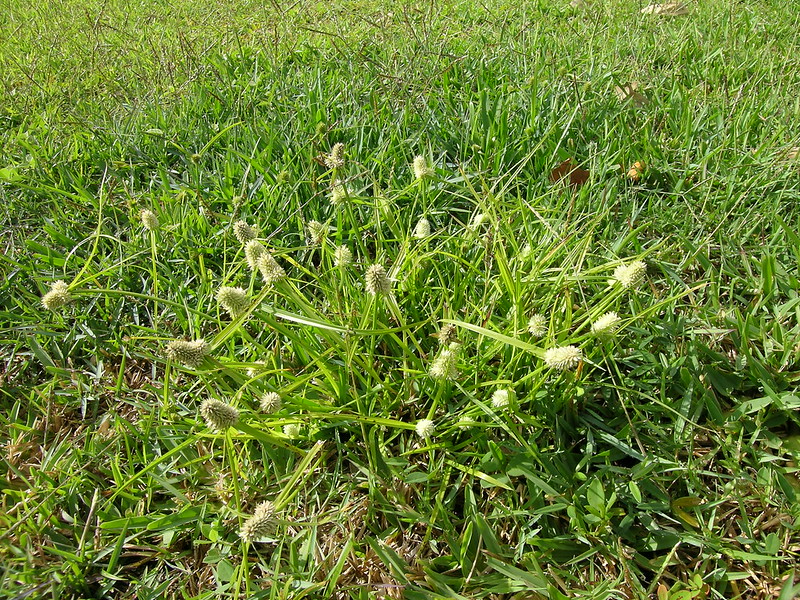
Weeds will never stop, so always stay vigilant throughout the summer. Even though it might be tempting to apply a systemic weed killer all over your lawn in the summer, don’t do it. Alabama’s high temperatures could end up killing off your grass along with the weeds. Instead, try to use more specific spot treatments when you see instances of weeds.
Fall Lawn Care in Alabama: September – November
Fall is the time to help your grass recover from the intense heat of summer and prepare for the winter ahead.
With average fall temperatures ranging from 40 to 65°F, you’ll have plenty of time to protect your lawn for the upcoming colder months. Let’s take a look at what your Alabama fall lawn care plan should include.
Core Aeration – Late August to Early September
Summertime in Alabama can be tough on cool-season grasses, such as tall fescue and Kentucky bluegrass, which don’t do well in the heat. After all the hot weather and foot traffic, air circulation in your soil is probably at its lowest at this time of year.
Core aeration is a great way to help your grass’s roots get the oxygen, water, and nutrients they need so your lawn can recover from summer and develop stronger roots for winter. Late August to early September is the perfect time to aerate your cool-season lawn. Don’t wait until your grass goes into hibernation, which usually happens when temperatures drop consistently into the 50s.
Note: Do not aerate lawns with warm-season grasses in fall. If you missed aerating your warm-season grass in the spring and summer, wait until next year.
Weed Control – Mid-September to Early-October
To prevent winter weeds such as chickweed and henbit, apply a pre-emergent herbicide in early fall. Applying it between the middle of September and the beginning of October can help you stay ahead of the game.
All of Alabama’s grass types, both cool-season and warm-season, would benefit from a pre-emergent herbicide application in the fall. They both go dormant in winter, giving weeds a chance to take over the lawn.
Overseeding for Winter Color – October
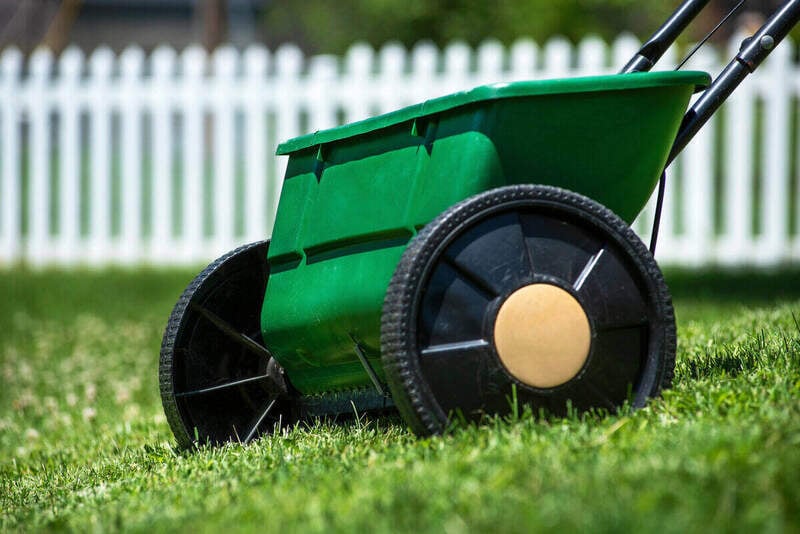
Want to prevent a brown or patchy lawn in winter? Overseeding with a cool-season grass type can be a great way to ensure your grass looks luscious no matter the season. If you have a warm-season lawn, like Bermudagrass, overseeding it with perennial ryegrass is an excellent way to keep your lawn green all year round.
When it comes to overseeding for winter, October is the best time. The cooler temperatures of an Alabama October are ideal for the germination of cool-season grass seeds, but there should still be enough time for the new grass to grow before the first frost.
*Note: Take into account that it takes around three weeks for the germination process to be complete. So, overseed your lawn at least three weeks before the first anticipated frost, but ideally 4-5 weeks before.
Fertilizing – October to November
The harsh summer months can leave your lawn depleted of nutrients. Give it a boost with one last fertilizing session before winter. October or November is the time to apply a fall fertilizer to prepare your grass for dormancy.
Check your local fertilizer blackout dates to avoid overapplication. Once you choose the products, make sure you apply them according to the exact specifications on the label to prevent overfeeding or underfeeding.
Reduce Watering – As Temperatures Cool Down
Reduce the frequency and amount you water your lawn as temperatures start to drop. During this time, you don’t want to overwater your lawn – not only because it’s a waste of water but also because too much water can potentially cause fungus growth. However, experts suggest you don’t abruptly cut off irrigation but gradually reduce it over a few weeks.
Mow Less Often – October to November
Summer’s over, and the grass knows it. As temperatures drop, so does its growth rate. So it’s time to cut your lawn a lot less often. To keep your grass healthy, try not to drop the mowing height below 2.5 inches for cool-season grasses and 1.5 to 2 inches for warm-season grasses.
Once your grass stops growing altogether, probably sometime in November for most of Alabama, you can put your lawn mower away until spring.
Winter Lawn Care in Alabama: December – February
Who said you don’t have to worry about lawn care in winter? Though most grasses will go dormant during this time – especially in northern Alabama – there are still steps you can take to help your lawn thrive through the cold season.
With average temperatures around 28 to 48°F and a chance of snow here and there, Alabama winters are relatively mild but can still be dangerous for your grass. You’ll need to protect it and tend to it with extra care if you want it to come out unscathed.
Here’s what kind of care your lawn needs in winter:
Remove Debris – Early Winter and Throughout As Needed
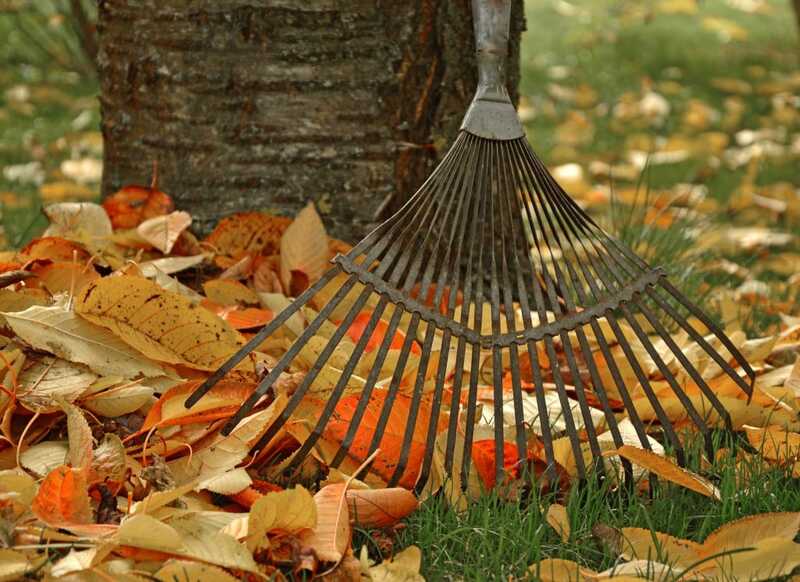
Leaf litter, debris, and large objects can put a lot of pressure on your lawn while it’s dormant. To prevent damage, keeping your yard clear and debris-free all winter is a good idea. At the start of winter, pick up all the leaves left over from fall and put away any furniture, lawn ornaments, or other objects sitting on top of your grass.
After the initial cleanup, do your best to keep your yard debris-free throughout the rest of winter.
Avoid Foot Traffic – All Winter
The cold weather is bad enough, but foot traffic can make it worse. The soil can become compacted, and heavy traffic can even kill your grass during this time. So avoid walking on your lawn during winter whenever possible, and certainly don’t park or drive on it.
Note: After a frost, your grass is especially fragile. Never walk on the lawn when there’s ice on the ground.
Apply Organic Mulch – Early Winter
Organic mulch like grass clippings, pine straw, or compost can help insulate your soil from the cold and protect the grass. As a bonus, organic mulch also helps block winter weeds. Apply organic mulch to your lawn – which might just mean leaving out your grass clippings after mowing – in early winter, before the coldest part of the year.
When to Fertilize Grass in Alabama
Alabama has both cool-season and warm-season grass types, and the best time to fertilize each varies. See below the ideal fertilization schedules for warm-season and cool-season grasses in Alabama.
Warm-Season Grasses
Here’s when to fertilize Alabama’s warm-season grasses, which include Bermuda, Zoysia, Bahia, centipede, and St. Augustine:
- March – Apply the first light application of fertilizer to your grass.
- May – Feed the lawn with a slow-release fertilizer to ensure it’s receiving enough nutrients during the hot summer months.
- Late August – Give your lawn an extra boost with one last fertilizer application before the colder months.
Cool-Season Grasses
And here are the best times to fertilize Alabama’s cool-season grasses, which include tall fescue, Kentucky bluegrass, and perennial ryegrass:
- Early March – Apply a nitrogen-rich fertilizer to kick-start the growing season.
- November – Slow-release fertilizer can provide a steady supply of nutrients throughout winter dormancy.
Word of Caution: It’s essential to follow the instructions that come with your fertilizer closely. Too much can scorch your lawn, so be sure to use the right amounts, depending on your type of grass and the season. In summer, avoid fertilizing if you have a cool-season grass type.
When to Aerate the Lawn in Alabama
Aerating the lawn helps water, air, and even fertilizers reach the grass’s roots more effectively. You should aerate your lawn once a year, and the best time to do so depends on whether you have a warm-season or cool-season grass type.
Warm-Season Grasses
For warm-season grasses in Alabama, late spring (May) and late summer (August) are the best times to aerate.
Cool-Season Grasses
When it comes to cool-season grasses, fall is the best time to aerate – just make sure you do it at least one month before the first frost. Once winter hits, it’s too late to get the job done.
FAQ About Alabama Lawn Care
In Alabama, it’s a good idea to mow your lawn weekly during the summertime for nice, short grass. But if you get a lot of rain, you may have to mow it more often.
The best way to water your lawn in Alabama is to keep it on a consistent schedule. Water your grass early in the morning so the soil has time to absorb the moisture before the day’s heat. Also, use a good sprinkler system that evenly distributes the water and avoids over-watering.
The best type of grass to have in Alabama is Bermudagrass. It grows well in the hot and humid summers while still being able to withstand a bit of cold during the winter. Bermuda is also low-maintenance and cost-effective, making it a great lawn choice.
Grass Seed Options:
– Pennington Bermudagrass Bare Spot (5 lb. bag)
– Pennington Smart Seed Bermudagrass Mix (8.75-lb. bag)
– Scotts Turf Builder Bermudagrass (10-lb. bag)
– Hancock Seed Co. Bermudagrass (50-lb. bag)
That depends on the type of plant. Some take a lot more maintenance than others. If you don’t want to keep up with a maintenance schedule for your garden in addition to your grass, we recommend Alabama native plants, which can usually thrive in the local climate with little to no attention from you.
Just be careful when choosing native plants, as some are only native to certain parts of Alabama. Learn your region of Alabama’s hardiness zone so you can always be sure you’re planting the right thing in your garden.
Final Thoughts
Looking after your lawn can be hard work, but it’s well worth the effort. Year-round maintenance is essential in order to keep the grass healthy and prevent weeds, diseases, and unhealthy growth. With some tenacity and the right schedule, you can have the perfect Alabama lawn.If it all starts to feel like too much, don’t hesitate to reach out to one of LawnStarter’s lawn care pros in Alabama. Whether you live in Montgomery, Birmingham, Huntsville, or Mobile, you’ll be in great hands with a pro from your city who knows exactly what local lawns need to look their best.
Main Image Credit: MariuszBlack / Canva Pro / License